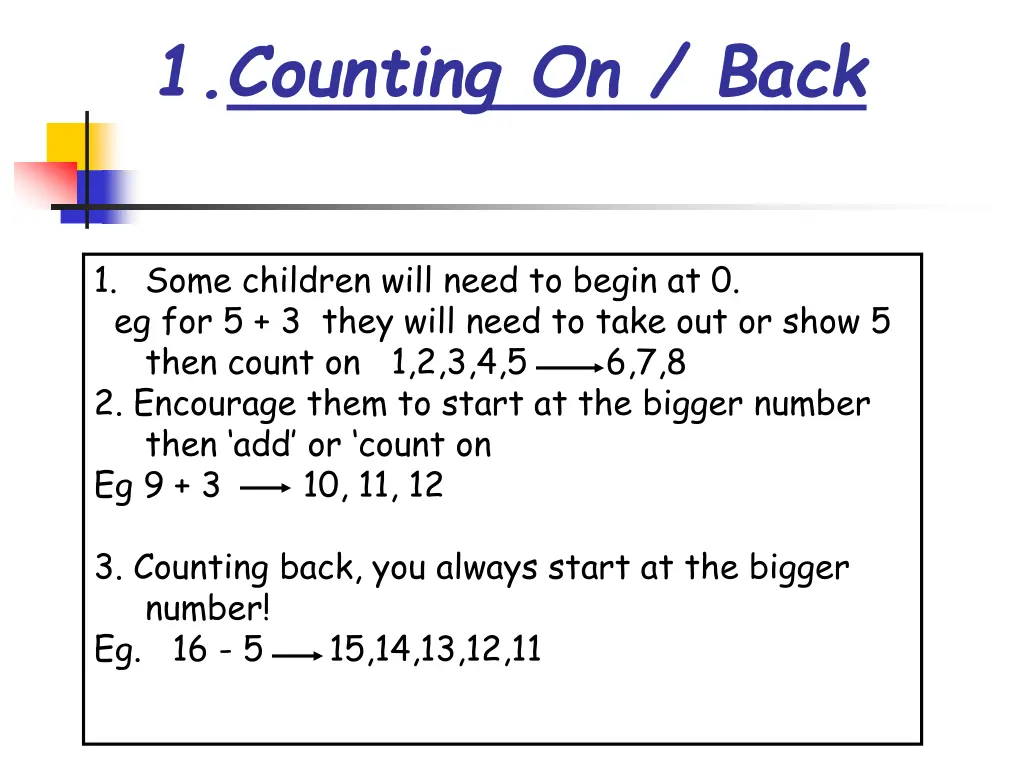
Effective Math Strategies for Teaching Addition and Subtraction
Explore innovative math teaching strategies like counting on/back, jump strategy, doubling, bridging to 10, trading, decomposition, and equal addends for enhancing children's addition and subtraction skills. Utilize visual aids and practical demonstrations to make learning engaging and effective.
Uploaded on | 0 Views
Download Presentation

Please find below an Image/Link to download the presentation.
The content on the website is provided AS IS for your information and personal use only. It may not be sold, licensed, or shared on other websites without obtaining consent from the author. If you encounter any issues during the download, it is possible that the publisher has removed the file from their server.
You are allowed to download the files provided on this website for personal or commercial use, subject to the condition that they are used lawfully. All files are the property of their respective owners.
The content on the website is provided AS IS for your information and personal use only. It may not be sold, licensed, or shared on other websites without obtaining consent from the author.
E N D
Presentation Transcript
1.Counting On / Back 1. Some children will need to begin at 0. eg for 5 + 3 they will need to take out or show 5 then count on 1,2,3,4,5 2. Encourage them to start at the bigger number then add or count on Eg 9 + 3 10, 11, 12 6,7,8 3. Counting back, you always start at the bigger number! Eg. 16 - 5 15,14,13,12,11
2. Jump Strategy Number lines are useful, especially with larger numbers. These can be numbered or empty 6 + 5 = Eg __|____|____|____|____|____|____|____ 5 6 7 8 9 10 11 OR 34 + 25 __|________|________|___|___|___|___|___| 34 44 54 55 56 57 58 59
3.Doubling or near doubling 1. 6 + 7 is the same as 6 + 6 + 1 6 + 6 or double 6 is a known or practised number fact 2. 8 + 7 is the same as 8 + 8 - 1 = 16 - 1 = 15 3. 30 + 28 is the same as 30 + 30 - 2 = 60-2 = 58
4. Bridging to 10: 1. For an addition like 9 + 4 Add 1 to 9 first, then 3 more So 9 + 1 + 3 = 13 2. For larger addition facts: 27 + 28 27 + 3 + 25 = 30 + 25 = 55
OR split then bridge 27 + 28 = 20 + 20 + (7 + 8) = 40 + 7 + 3 + 5 = 40 + 15 = 55 OR split, bridge and jump: go to http://www.curriculumsupport.education.nsw.gov.au/primary/mathematics/assets/images/)
5. Trading: Addition Initially done with concrete materials such as iceblock stick bundles or base 10 material so children can see how they need to trade You can see this demonstrated at: http://www.allenandunwin.com/teachingmaths/secure /opsense_MABadd.htm#with
a) Decomposition: t u 5 h t u 5 6 4 5 6 + 2 7 5 7 3 1 The expression borrow and pay back should not be used. 43 + 38 81 Add ten ones and add ten is preferable.
b) Equal Addends: h t u 69+ 83 1 5 2 The expression carry the one should not be used. Add ten ones and add ten is preferable
6. Subtraction: a) Decomposition t u 3 42- 27 1 5 h t u 3 456- 385 71 You can see this demonstrated by going to: http://www.allenandunwin.com/teachingmaths/secure/ opsense_MABsubtract.htm
b) Equal Addends h t u 8 1 2- 6 9 3 1 1 9 The expression borrow and pay back should not be used. Add ten ones and add ten is preferable 1. Firstly add ten ones to units column. This becomes 12-3 which is 9 (units). 2. I must then take off this ten from the tens column. It can be taken from the bottom number as it will give the same answer as if it were taken from the top ie. 10-9 = 11-10. This is what the term equal addends means 3. You then repeat the process for the hundreds column.
